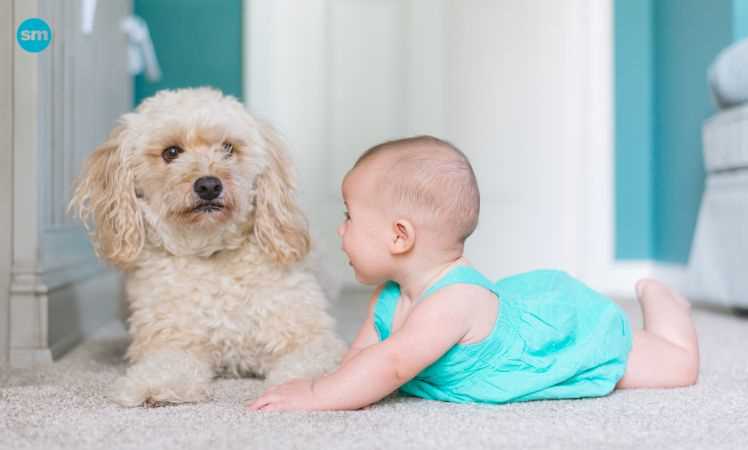Last Updated on January 22, 2024 by Lori Pace
As a single mother, you’re tasked with a plethora of responsibilities and decisions. One such decision that often pops up is whether to introduce a puppy into your household or add a furry member to your family.
Pets, especially dogs, can provide companionship and teach children valuable lessons about responsibility, empathy, and care. However, bringing up a puppy alongside your children also has its share of challenges.
The Joys and Challenges of Raising Puppies
Raising a puppy, while undeniably delightful, comes with its share of unique joys and challenges.
Especially for single mothers, navigating this journey involves not only the typical hurdles of puppy rearing but also managing the dynamic of introducing a new, lively member to the household.
Understanding these joys and challenges can provide a clearer perspective on what to expect and how to create an enriching environment for everyone involved.
The Benefits of Having a Puppy
Having a puppy in the home can imbue your household with a new kind of energy and joy. They can also serve as excellent companions and contribute significantly to your children’s development. The benefits can include:
Companionship
The vivacious and affectionate nature of puppies can brighten your household. The bond between your children and their puppy can grow into a unique, enriching friendship that brings warmth, comfort, and companionship to your family.
Teaching Responsibility
A puppy’s needs offer children the opportunity to learn about responsibility firsthand. This includes:
- Feeding: Understanding the importance of nutrition and regular meal times.
- Walking: Realizing the necessity of exercise for overall health.
- Grooming: Learning about the importance of cleanliness and regular grooming.
Social Skills and Empathy
A puppy can help children develop essential social skills and empathy. Interacting with a pet teaches children about non-verbal communication, mutual respect, and understanding another being’s needs and feelings. Through their interaction with the puppy, children can learn:
- Reading Non-Verbal Cues: Understanding a puppy’s body language helps children develop an ability to read non-verbal cues, a crucial social skill.
- Mutual Respect: Children learn to treat the puppy gently and with respect, teaching them how to handle delicate situations and interact politely with others.
- Empathy: By learning to respond appropriately to a puppy’s emotions (like distress, joy, or fear), children can learn to empathize, an important skill in their emotional development.
The Challenges
While the joys are plentiful, raising a puppy does pose several challenges. These are important to understand and prepare for to ensure a positive environment for everyone:
Time and Effort
Puppies require a lot of care and attention, especially in their early months. This can be demanding for single mothers who are already juggling multiple responsibilities. Puppies need:
- Regular Feeding: Puppies typically require multiple feedings a day, which need to be scheduled around their nap and play times.
- Training: Basic obedience training, house training, and socialization are all essential for a well-behaved puppy and can require significant time and patience.
- Exercise: Puppies have a lot of energy and need plenty of playtime and walks to keep them healthy and happy.
- Healthcare: Regular vet appointments for vaccinations and check-ups are also part of the package of raising a puppy.
Potential Safety Issues
Especially with larger or more excitable breeds, there’s a risk of accidental injury during play. Young children can be knocked over, scratched, or bitten if play gets too rough, making close supervision a must.
Allergies
It’s possible that children, or even adults, may have or develop allergies to dogs. These can range from mild irritations to severe reactions, which is an important consideration before bringing a puppy into your home. Consider having allergy tests done for your family if you’re unsure about potential allergies.
Managing Complications: E-Collars
While these challenges may seem daunting, they can be managed effectively with the right strategies and tools.
Using Training Tools
Training your puppy is critical to ensure a harmonious environment in your home. An e-collar can be an effective training tool. While its use may be controversial, when used correctly and humanely, it can contribute to successful training outcomes.
- Functionality: E-collars can be used to train puppies on a range of behaviors, such as not barking excessively, staying within boundaries, and responding to commands.
- Selection: Choosing the right E-collar is important. Look for features such as a range of intensity settings, the ability to give a tone or vibration warning before the static stimulation, and a comfortable fit for your puppy.
Setting Boundaries
Setting boundaries for both your puppy and your child is crucial. Teach your children how to interact with the puppy appropriately and respect its space. Similarly, train your puppy to understand its limits within your household.
- Respecting Space: Teach your children not to disturb the puppy while it’s eating or sleeping. This will help avoid any aggressive reactions from the puppy.
- Gentle Interaction: Ensure your children understand the importance of gentle interaction with the puppy, avoiding pulling its ears or tail, which might provoke it.
- Supervised Play: Ensure play sessions between your child and the puppy are always supervised to prevent any inadvertent harm.
Final Considerations
As a single mother, deciding to raise a puppy alongside your children is a significant decision. While it presents certain challenges, the rewards can be incredibly fulfilling.
By understanding the potential complications and adopting effective strategies to manage them, you can successfully integrate a puppy into your family’s life.
Whether it’s using tools like the “Best E-Collars for Dogs” or teaching your children about respect and responsibility, you can create a safe and loving environment for all members of your family, be they two-legged or four-legged.


